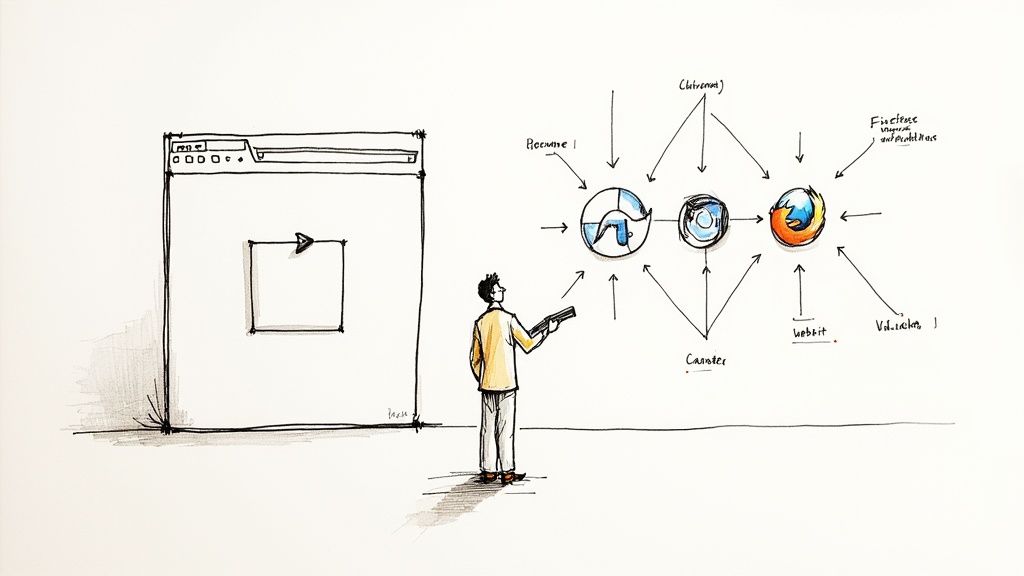Code Coverage vs. Test Coverage: Which Is Better?

Developers working on particularly complex projects need to constantly monitor the state of their code and all contributors' code to ensure it remains functional when deployed. Bad code tends to creep in unannounced, and it takes considerable effort to detect issues manually. Enter code coverage and test coverage to save the day.
By mastering both processes, you can implement more comprehensive code-testing practices and catch issues well before they can enter production environments.
🌓 Code coverage vs. test coverage
The differences between code coverage and test coverage aren't too hard to grasp. Here’s a more detailed explanation of these two connected concepts.
👉 What does code coverage mean?
You may have wondered, "What is code coverage in unit testing?" and thought it was something similar to the concept of test coverage. But this isn't the case. Code coverage testing measurements reveal how much of your project's source code has been covered by tests.
Achieving ideal code coverage involves targeting 100% of your project's code with tests. This starkly contrasts the objectives of code coverage's close cousin, test coverage.
Code coverage is measured in many ways, depending primarily on a given team's interests and their project's codebase structure. Here are a few of the different metrics that are often used to measure code coverage:
- Line coverage is arguably the most straightforward approach to measuring code coverage. It’s simply a measurement of all the lines of code tested relative to the total number in your codebase.
- Function coverage: Here, coverage is charted based on the number of existing functions in your codebase that tests have covered.
- Condition coverage: This form of code coverage delves into the details of each function's Boolean expressions to determine how many of all of the potential options have been tested.

👉 What do you mean by test coverage?
Test coverage is surprisingly distinct from code coverage, but the difference can be subtle if misunderstood. Unlike code coverage, which deals with source code coverage by tests, test coverage covers predefined requirements and utilizes all existing tests. Developers use test coverage figures to tell how many of their tests are running and how many of the requirements they have laid out are being addressed by those same tests.
Achieving ideal test coverage comes down to satisfying all of the requirements your team has identified within your code (not necessarily all of your source code) and ensuring all your tests run to completion.

👉 What is the difference between code coverage and test coverage?
So, is code coverage the same as test coverage? No, code coverage and test coverage are definitely not synonymous. As your team progresses with defining and implementing comprehensive tests for a given codebase, you’ll need to account for the differences between these two concepts to achieve your goals.
The main differences between code coverage and test coverage that you should remember are:
- Code coverage focuses on covering absolutely all of your source code with tests at least once.
- Test coverage focuses on covering predefined requirements with tests that all run to completion.
👀 Code coverage tools
There are numerous tools for developers to use to coordinate their code coverage and test coverage assessments. Most of these concentrate on handling code in a single programming language and will need to be combined with other tools to form a more comprehensive strategy fit for use with all of the languages a given project uses.
Here are a few code coverage options to consider using for some of the top development languages of the year:
1️⃣ Java coverage tool
Cobertura: This free tool makes calculating code coverage as a percentage of all of your project's code possible. It is easy to get up and running and produces clean, "pretty" output.
2️⃣ Python coverage tool
Coverage.py: This code coverage solution hits on all the main points code covering specialists are likely to be looking for in a tool of this kind. Code that could have been executed by tests but was not is identified automatically by Coverage.py.
3️⃣ Javascript coverage tool
Istanbul: Use Istanbul to generate "beautiful" HTML-based reports on function coverage, statement coverage, and branch coverage of your project's unit tests. Reports can also be generated in popular styles, including the Java coverage tool Cobertura's format.
4️⃣ Go coverage tool
Go offers its own built-in tool to test code coverage. The appropriately named "test" tool is accessible from the command line and can be called on to perform all of the essential functions testers could need. Code coverage is performed by adding a special flag to the command, like this "go test -cover." HTML reports can also be generated with this tool.
Make repository maintenance easier with Mergify ❤️
Mergify offers an automated solution to the most tedious facets of repository maintenance. From automatically mashing the merge button at the right time to assigning the right reviewers on GitHub and more, Mergify is an excellent choice for teams of all sizes to offload the little things that take up the most time.
Schedule a demo today to learn more about Mergify and how it can help your team get more coding done.





